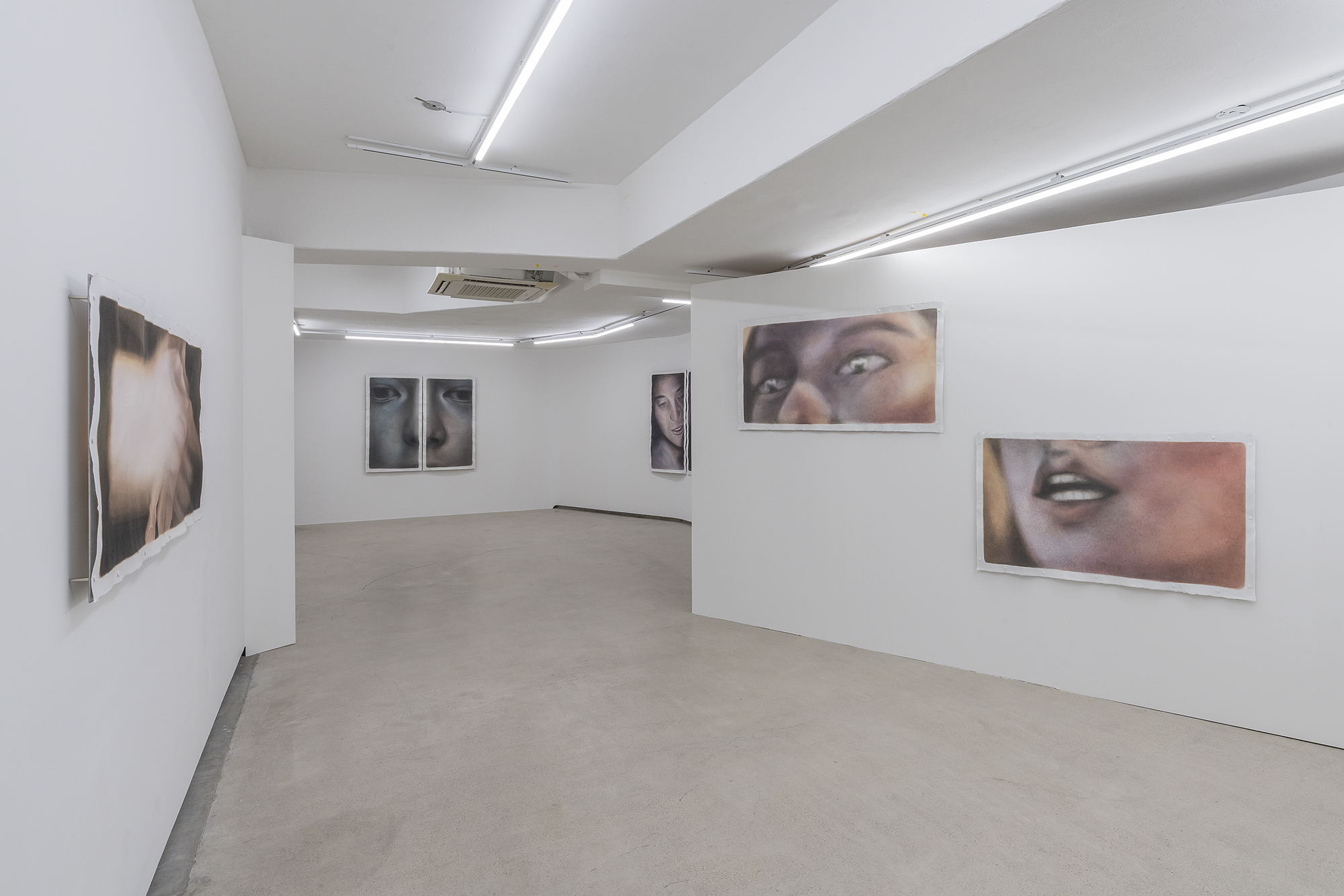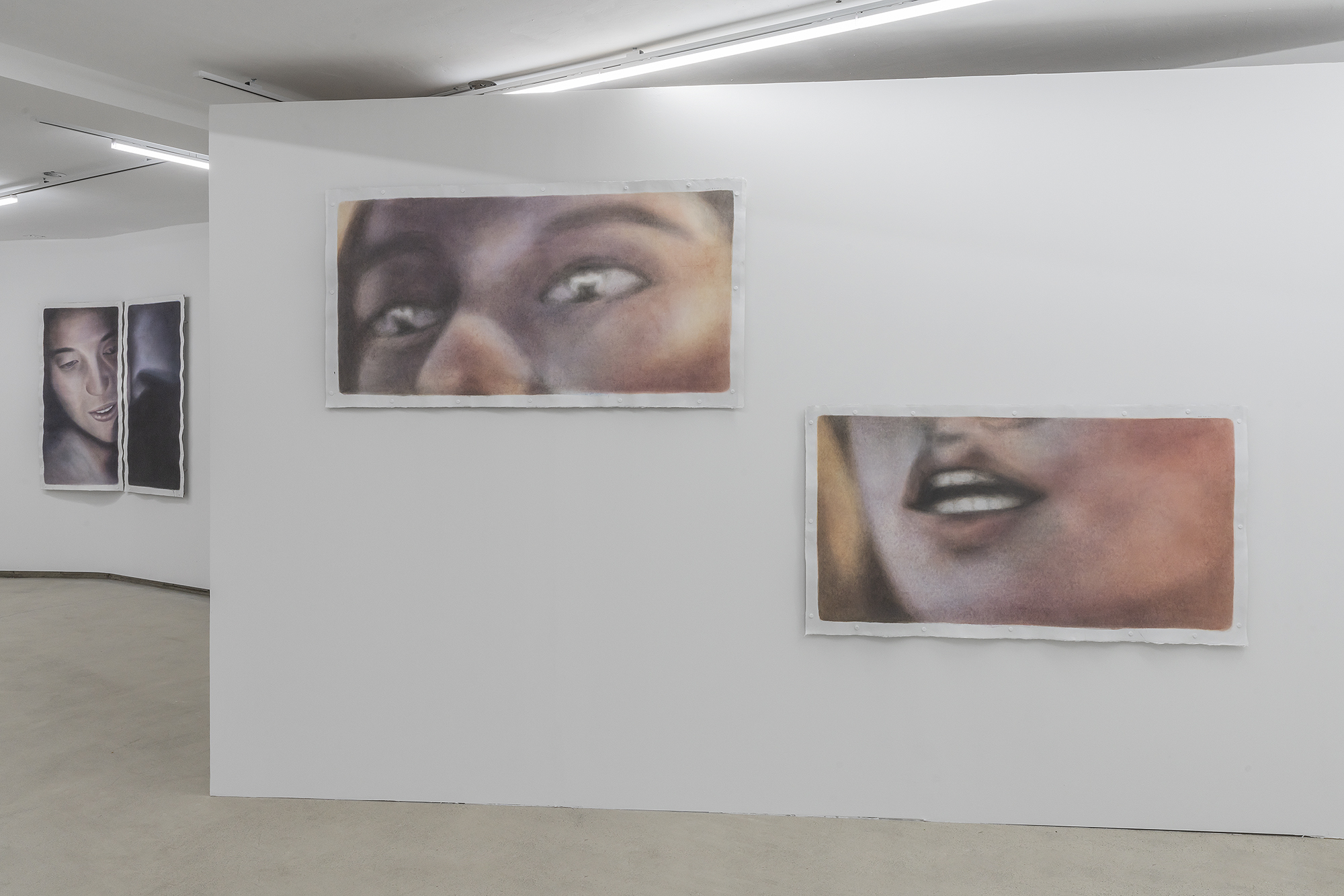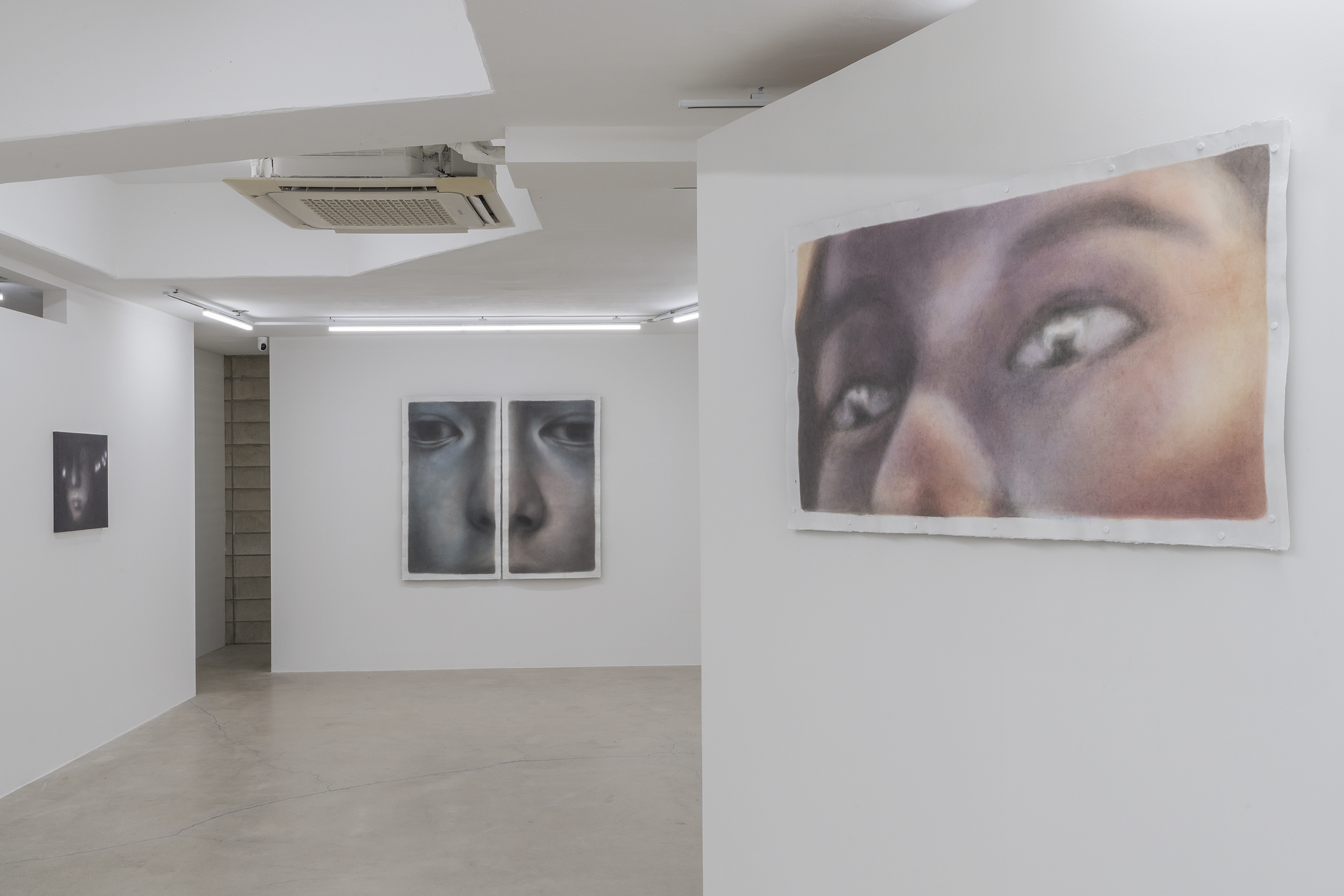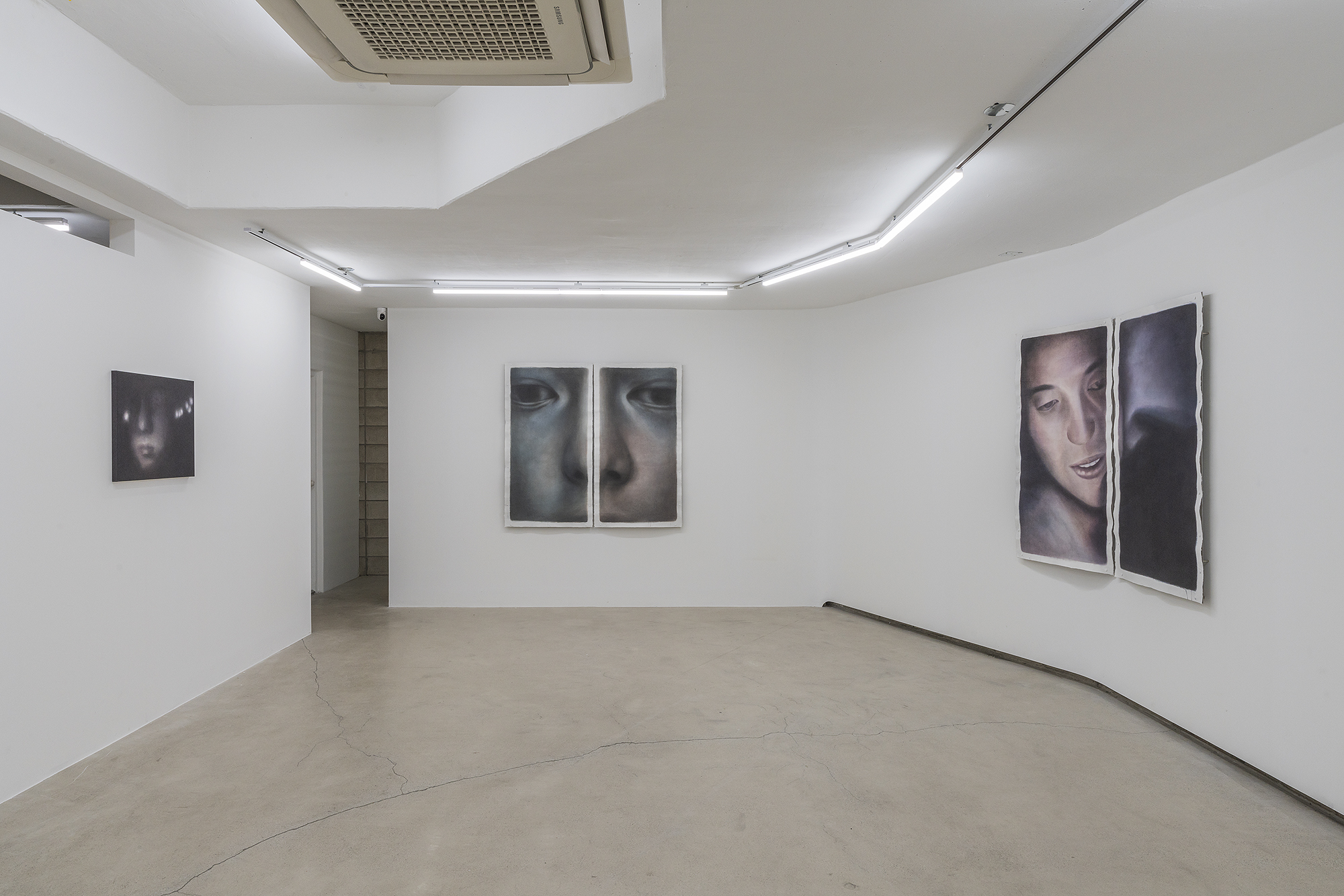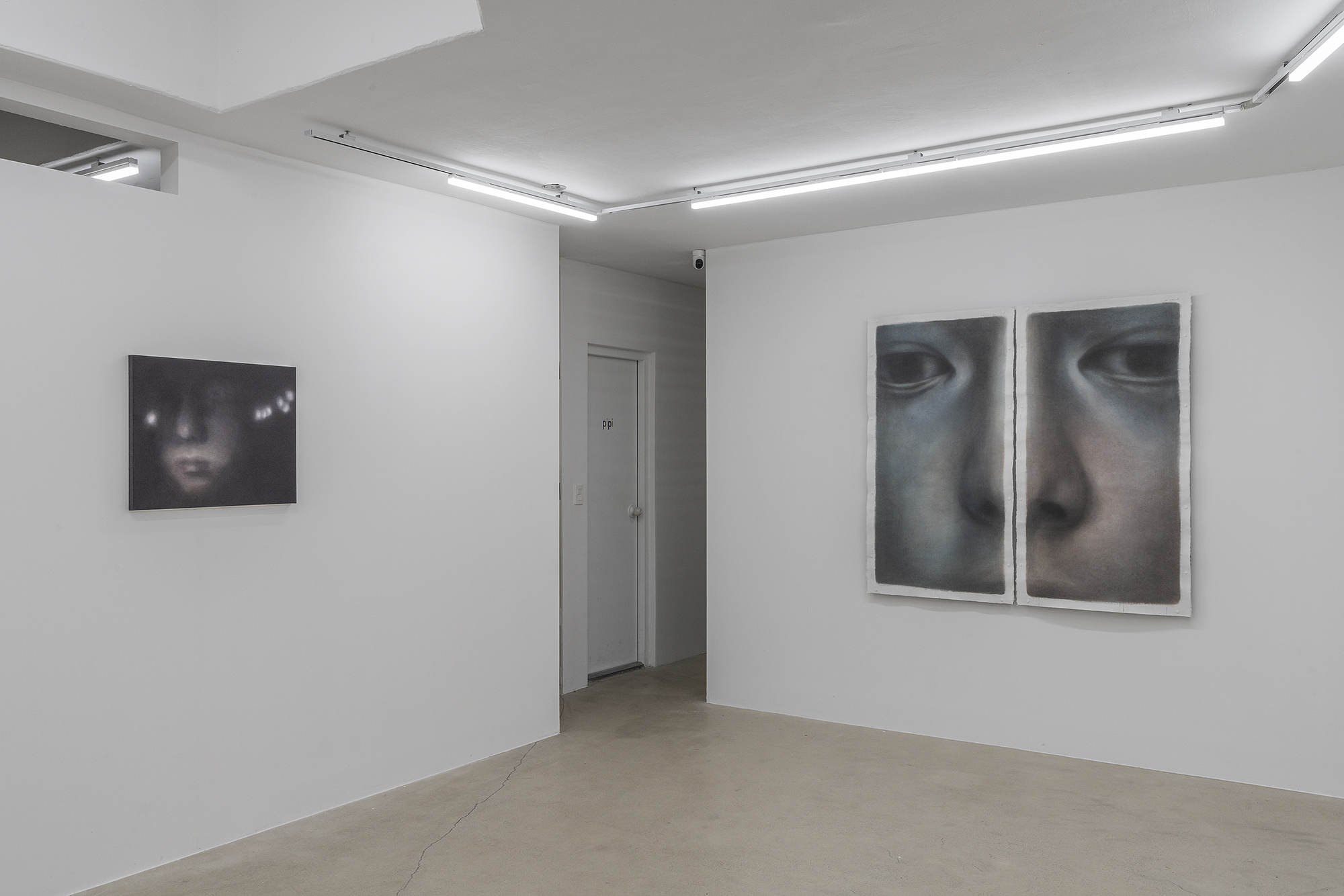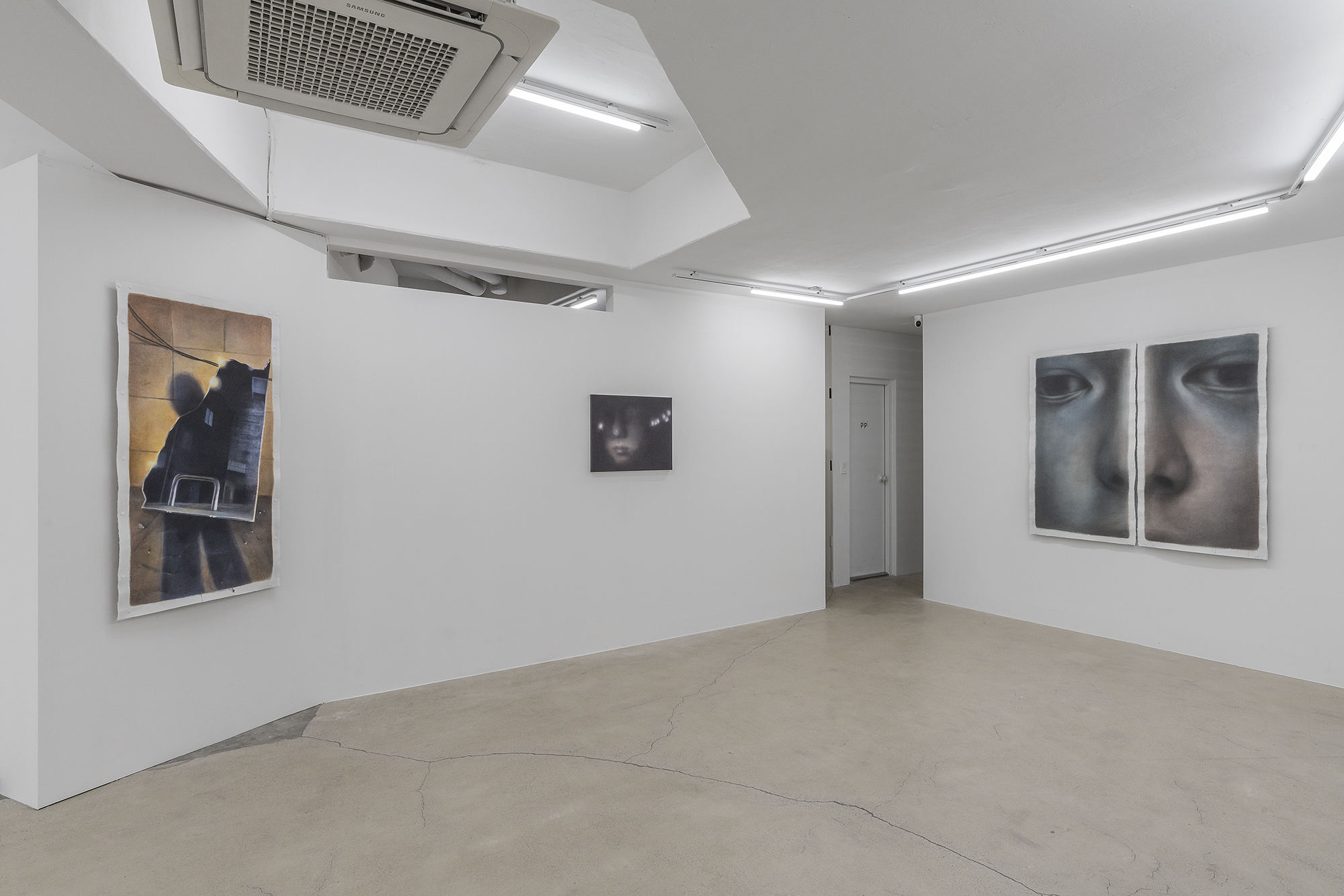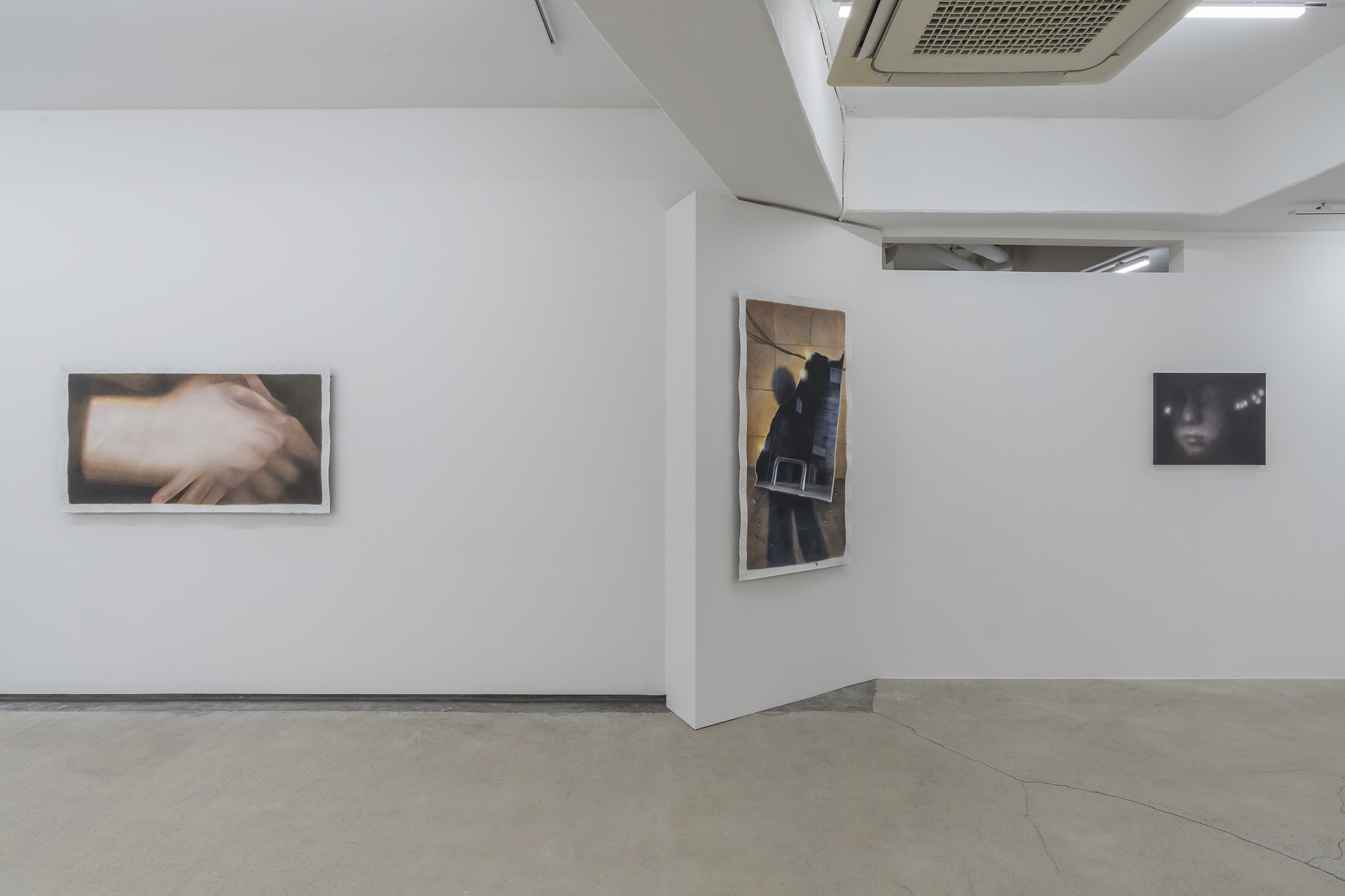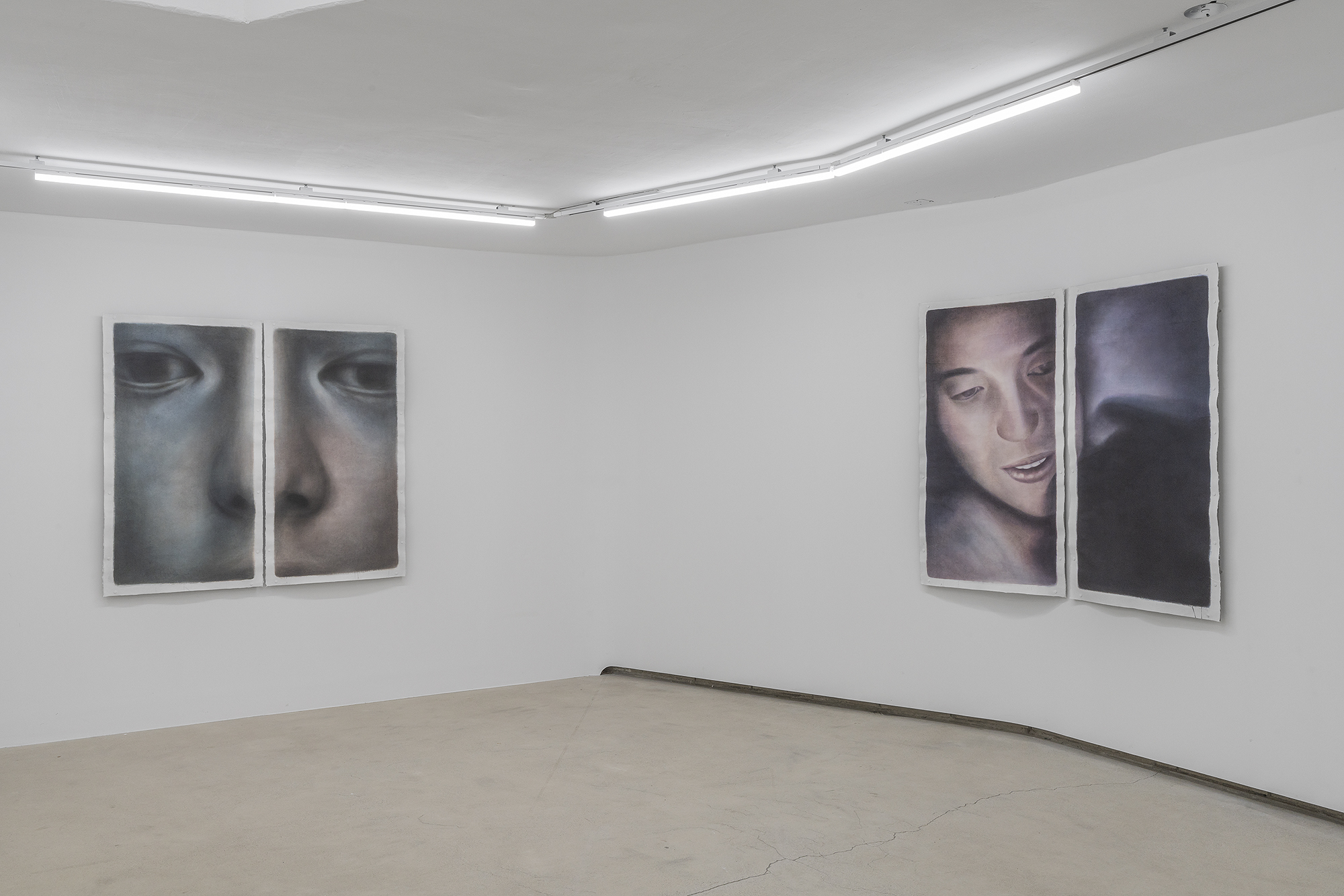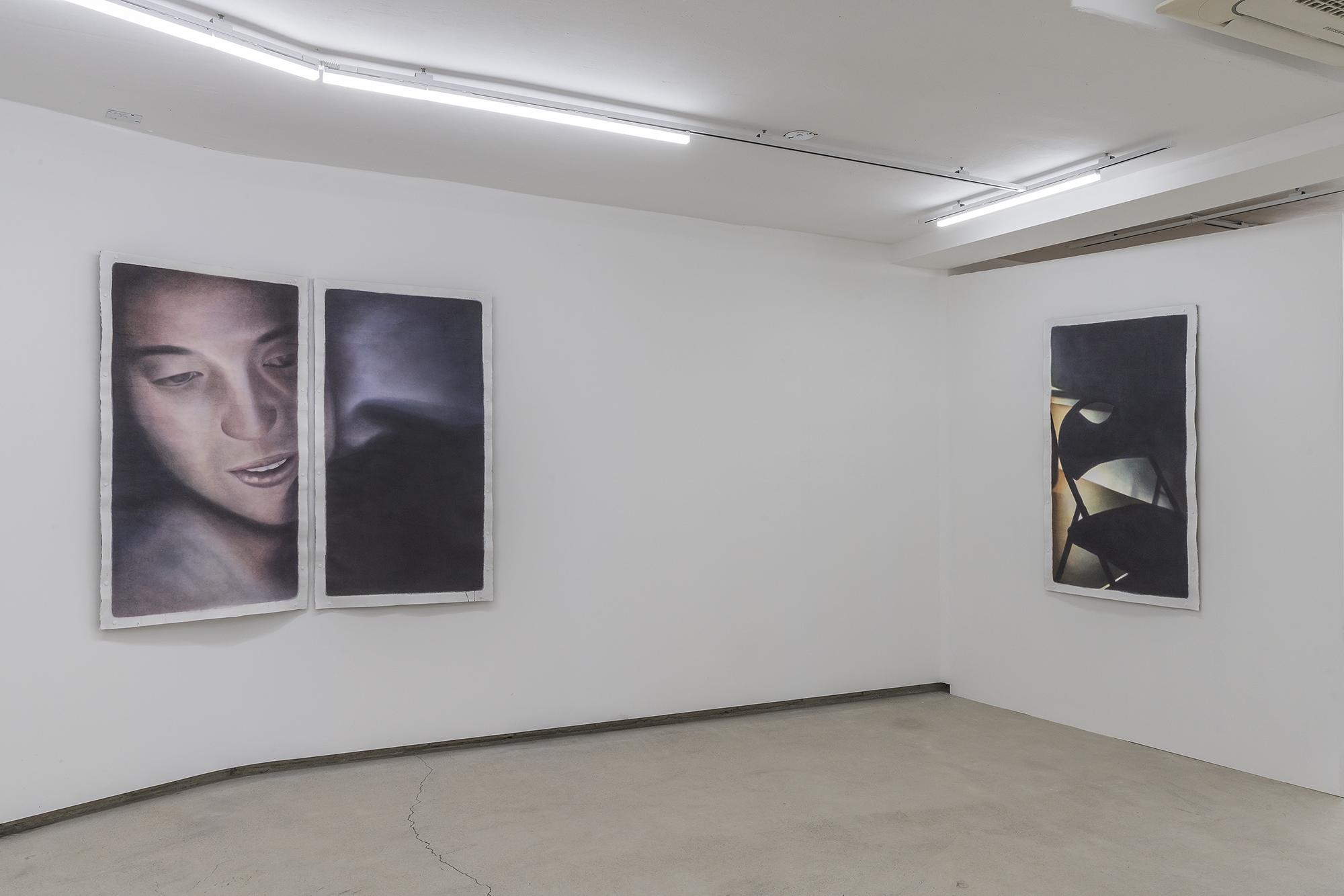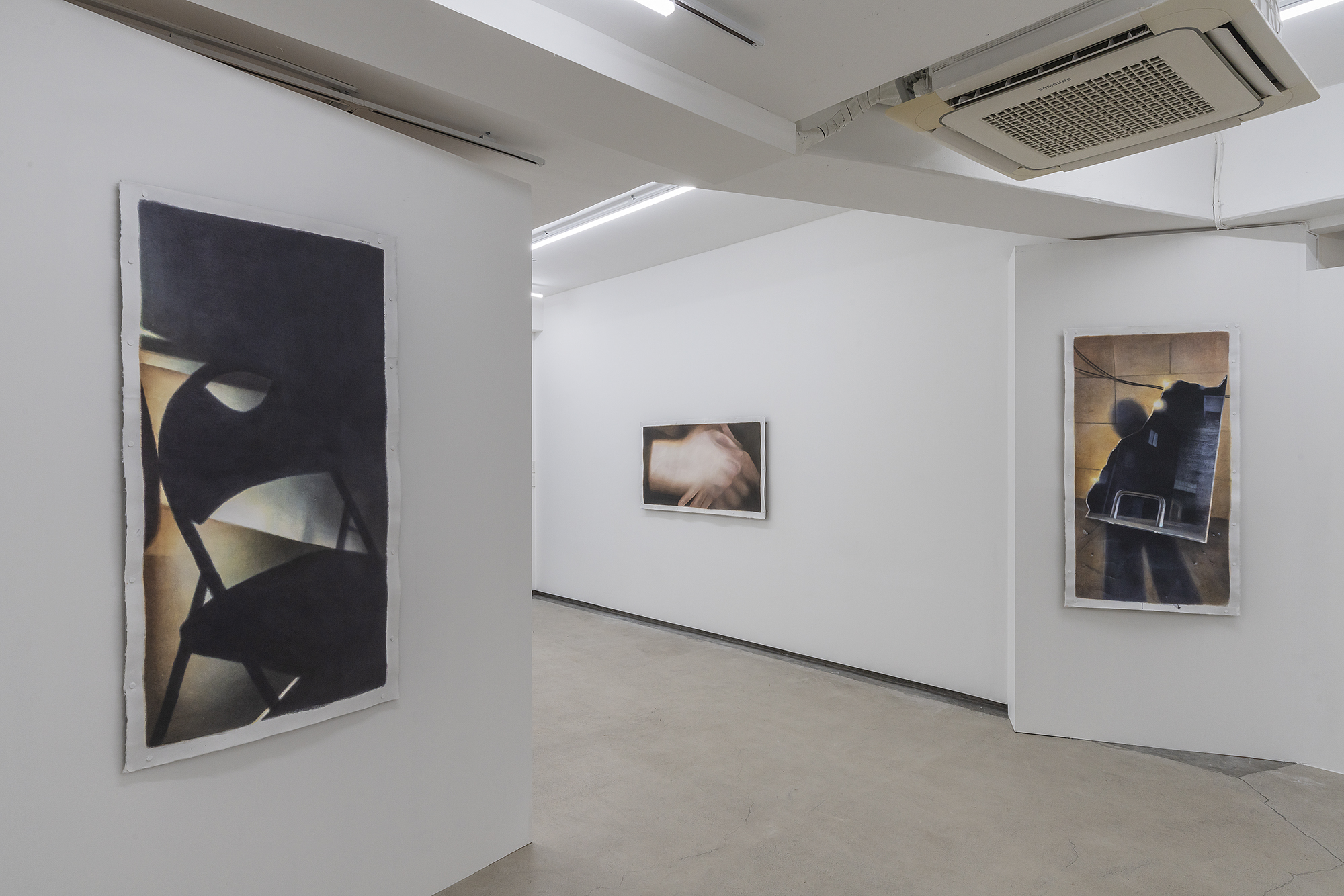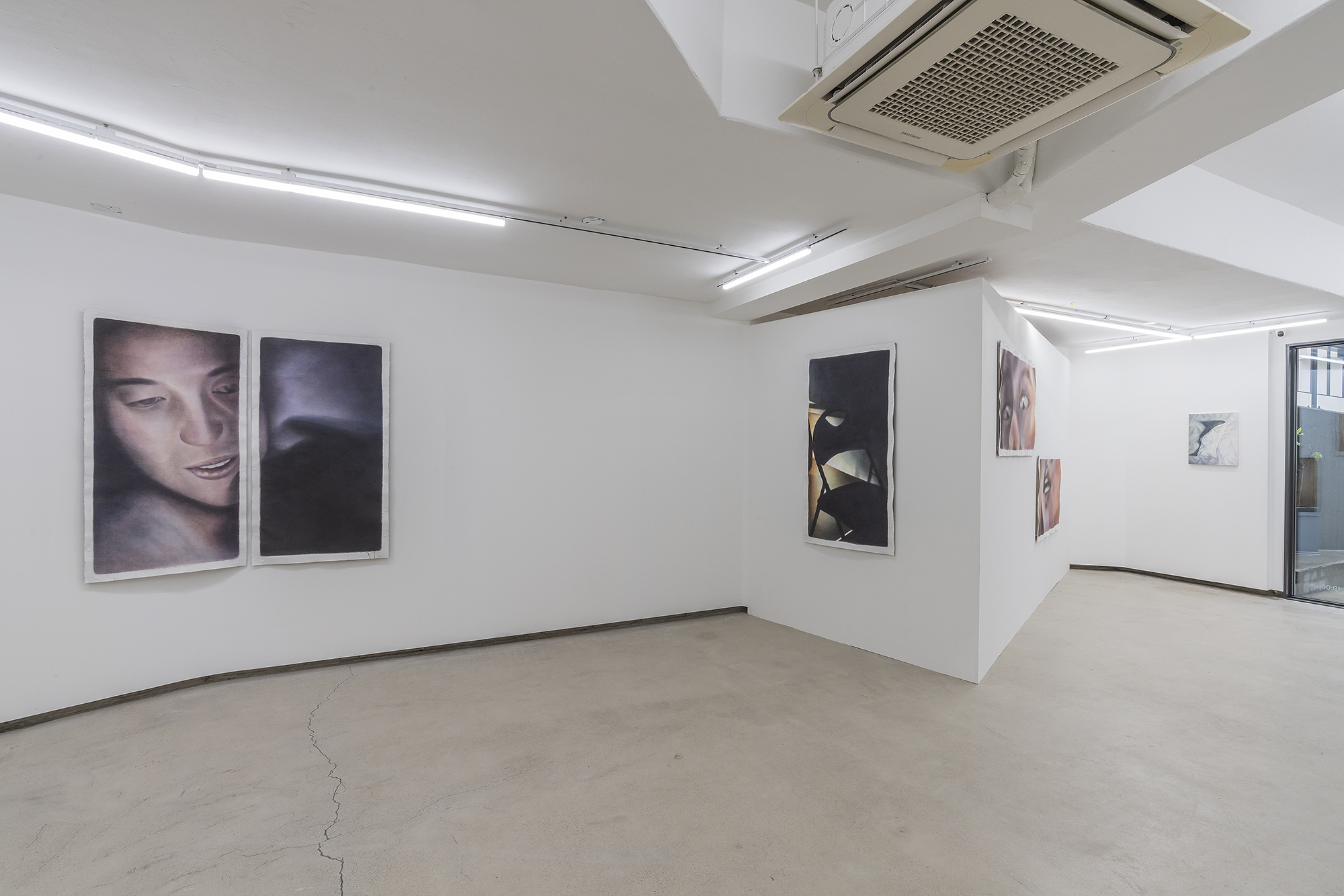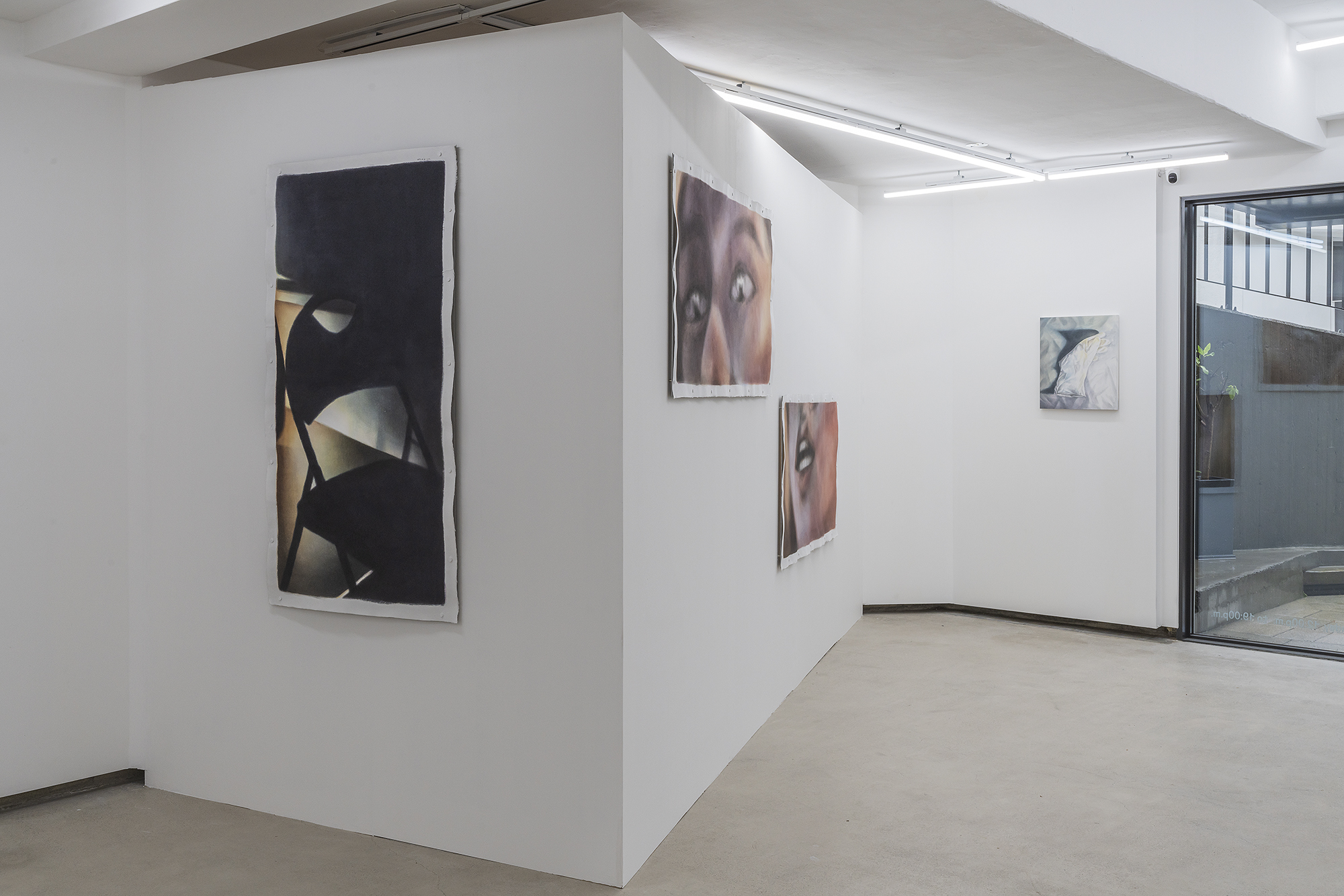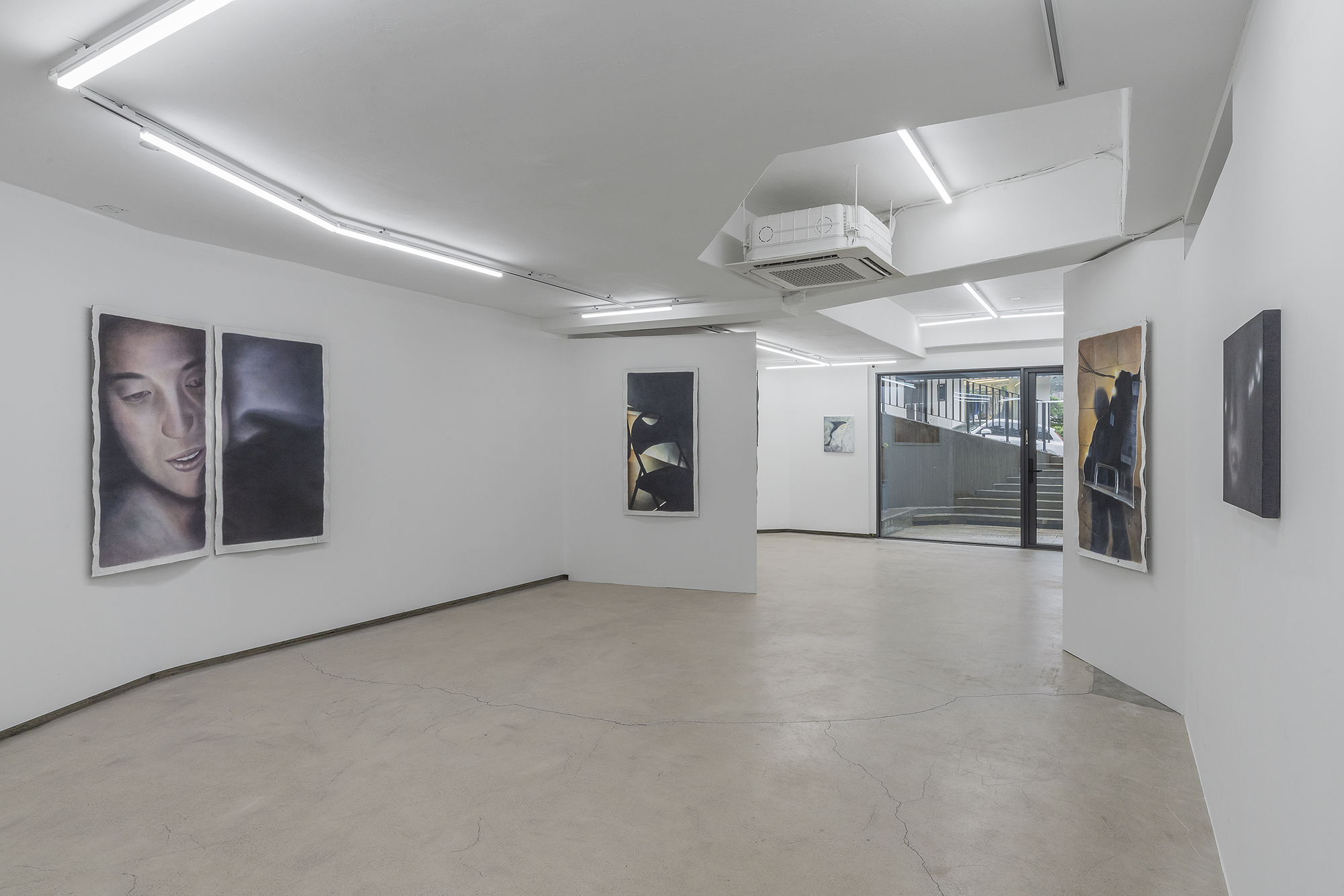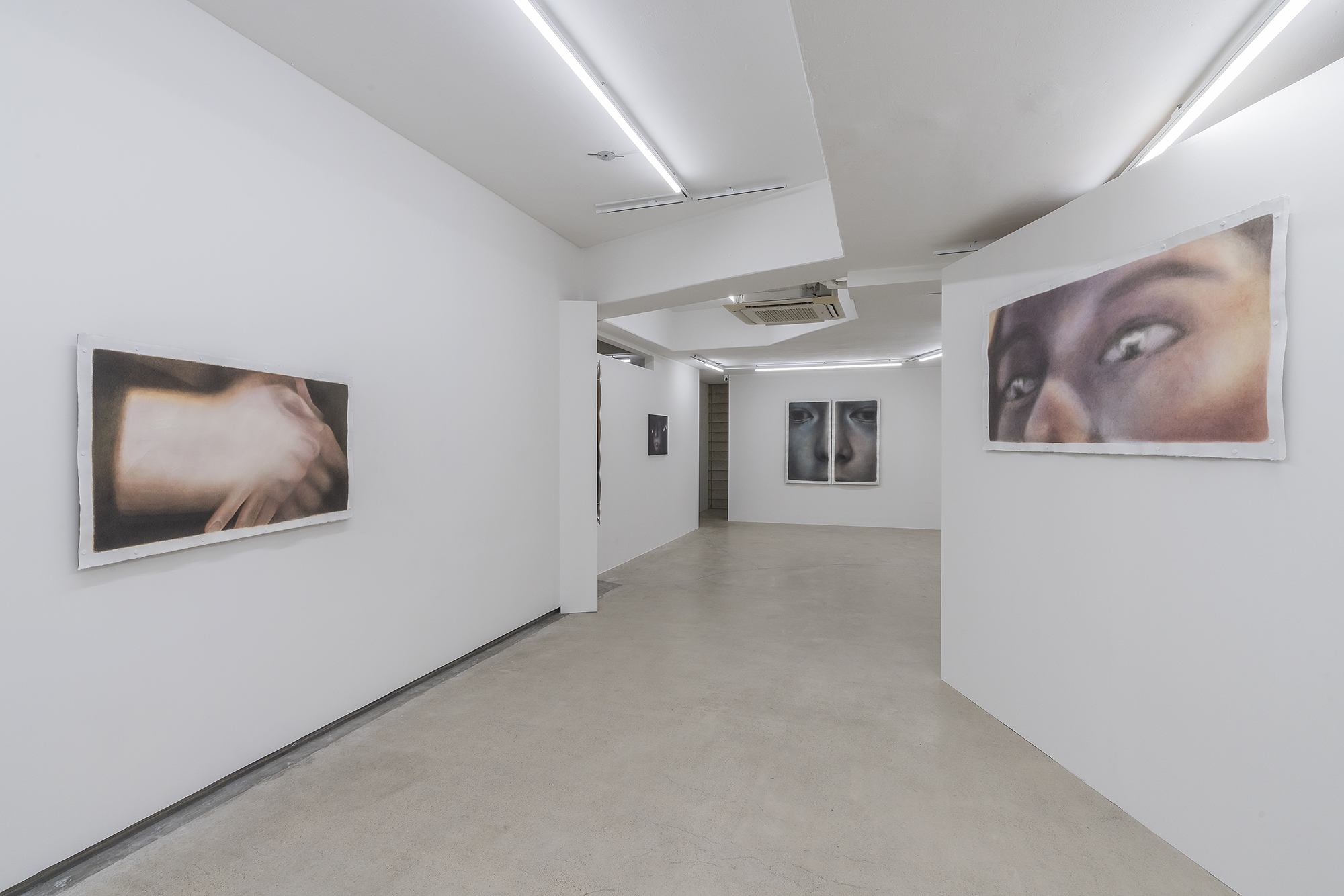The artwork of YANG Yooyun originates in a creeping sense of unease that eats into day-to-day life. It can be described as something that comes into view at moments when individual and collective belief collapse within society, or when the anonymous individual’s life is shaken by society’s irrationality. YANG captures emotions of unease in her canvases through her unique perspective and gaze, along with an expressive style that evokes a particular mood. For instance, she establishes spaces of darkness through delicate variations in the intensity of color, while amplifying characteristic nuances by placing not the major players in incidents at the center of her canvas, but rather peripheral and anonymous ones. Cropping and reconstructing images taken from daily life, she places them in frame in such a way that they slip away from existing narratives, encouraging the different narrative possibilities that existed deep down inside. The textures of the surfaces are thin, yet with a depth and density that is difficult to fathom; like the placement of a membrane, this disrupts the clarity and causes the viewer’s gaze to look beyond. The moments from life that Yooyun YANG captures are filled with the existential grappling, loneliness, and loss of vulnerable individuals within society.
Faces with trembling eyes
For a person creating images, the representation of a figure’s face is fraught with risky decisions. All the components of what we call the “face”—the expression, the gaze, the color and even the furrows of the skin—are like a language that clearly convey quite a few things. As the representation arrives closer to technical perfection, the subject’s identity quietly becomes clearer, causing the gaze to focus on surface-level phenomena rather than the hidden contexts of the image. The faces that Yooyun YANG paints, however, become less definable in proportion to the technical prowess with which they are rendered. In her frame, the faces look outside where the surroundings have been trimmed away, so that the situation can no longer be surmised. The pale skin and the trembling, unfocused eyes convey the sense of having lost one’s will within reality, yet they also resemble the state of awareness attained on the other side of an exalted spiritual state. The expressions seem to simultaneously harbor feelings of anxiety and tranquility, emptiness and fullness, joy and despair, madness and delight; instead of a single scene, they seem to drive narratives and feelings that are polyphonic. At the same time, the trembling pupils represent a gaze intended to remain constantly aware of the self and to approach the object outside the frame, even in an uncertain situation where the self is being questioned by the outside perspective. In a sense, the faces that YANG portrays can be said to belong to individuals with a dual identity, or to constitute schizophrenic representations of us. In those shaking faces, we see me, you, us, and the different aspects of the self. In truth, the face-images are silent; the shaking comes from the projection of the viewer’s desires.
Light and dark
Standing with their back to the light, the figures leave quite deep marks along their contours, but what exists inside them is never explained. The shadows elicit a gaze deep inside, but they permit only an endless settling, without any way of knowing what lies within. Our perspective is drawn into the deep darkness, but it ends up cast outside the object before it ever arrives anywhere. Meanwhile, the bright light seems to reveal everything and conceal nothing, yet the depth of shading is omitted over the uniform surface, leading to a contradiction of endless self-projection. Yooyun YANG places objects at the center of the frame, but she never clearly indicates their identity. The only clues we are given are the shapes that appear with the darkness. Examples of this include Afterglow in between (2012), in which backlit objects exist as black silhouettes, scattering the gaze across the cracks and the space beyond, and its inverse Reclining Light (2023), where an indiscernible object takes on a sense of presence through its shadow. The important thing is not the clarity of the object represented. This is the way in which it exists, a stark contrast with a situation that is illuminated yet with a meaning that remains unfixed. Presented mutely as darkness, the image takes on meaning through the surrounding light. All we find here is a nuance of trembling and shaking. The object is not clearly captured by the gaze, dislocating itself faintly from its object while at the same time inscribing itself as profound darkness.
Cracks of lingering light
Afterglow in between (2023, Primary Practice, Seoul) consists of the cracks that arise in the partitioning and connecting of images. Individually and collectively, the long horizontal or vertical rectangles of the frames create a single image, yet their meaning is not completed therein. The cracks formed by the gaps open up the meaning that follows—like the tension created by disparate joining of sequences in film, or the way that a sudden, deliberate severing of some smooth connection guides our thinking to devise a link at some imaginary level. The truncated frame thus operates as a new realm of meaning. Just as Yooyun YANG reveals a way of being in the opposition between light and darkness, this realm can be seen as a domain that emanates a new glimmer of light between death and vibrancy, meaninglessness and meaning. As Georges Didi-Huberman has observed, dim light creates a form of tension in dialectical relation to strong light, assuming the dynamism of transformation. Existing in counterpoint to the searchlight that erases all depth and draws attention to the surface-level world alone, this faint light makes us aware of the moments underneath the surface—moments of life amid darkness. In that sense, we may see it as the “light of life”: chaotically dispersed due to its faintness, yet constantly emerging in the darkness. Obstructed by the boundaries between segments, the gazes of the faces on the canvas are directed at the faint light in the cracks. The eyes point outside the frame, following spots of faint light that linger in the cracks, examining these spaces that appear intermittently in the darkness. Those glimmers in the cracks are scattered, yet they constantly arise, disappear, and arise again—the emotions of life, lingering and resisting.
The elements pierce into our very core: the faces that harbor expressions of both familiarity and strangeness, the moments of everyday life, and the undefinable sense of unease conveyed by the objects present there. They alternate among disparate emotions—sometimes cold or chilling, sometimes like the serenity that comes after frenzied joy. At the end of it all, we detect the sense of someone who has been helplessly broken by what the artist describes as our “age of anxiety,” yet who is trying once again to carry on with life. At the end of the gaze, the object we were observing begins to tremble more and more, drifting away from a vanishing point. Yet as that gaze intersects with the gaze depicted by YANG on the canvas, our sense of the here and now in which we stand becomes a little bit clearer.

Credit
Participating artist : YANG Yooyun
Curated by KIM Sung Woo
Text by KIM Sung Woo
Design by REMOTE (KIM Seunghwan)
Installation technician : Mujindongsa
Photo by CJY ART STUDIO (CHO Junyong)


